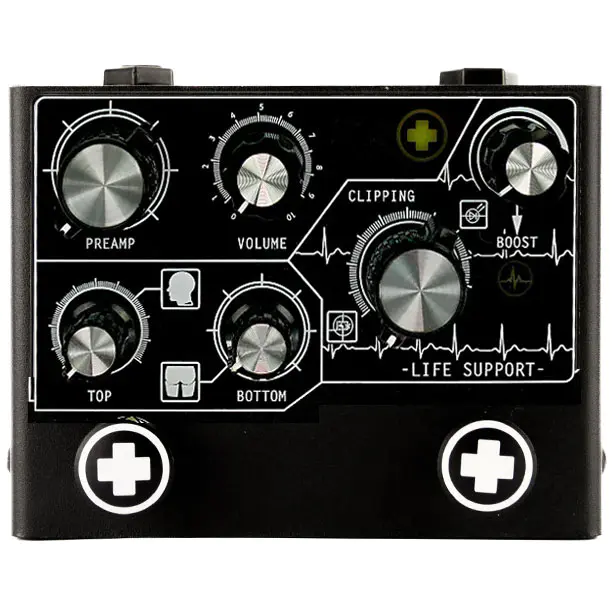
Hailing from London, UK, the Intensive Care Audio Life Support is – to quote the manufacturer’s playful description mocking medical language – an “all analogue overdrive and distortion pedal for the treatment of Bland Guitar Syndrome and Excessive Aural Dryness.” Or, to put things into perspective, an overdrive + boost.
Compared to other devices by this imaginative British builder, the Life Support is rather straightforward: the left footswitch turns on the pedal, while the right one triggers the boost.
The overdrive section consists of three knobs: the most unique one is the Clipping one, which blends two very different clipping diodes:
- Fully clockwise is LED clipping, which produces a softer and more transparent saturation.
- Fully counter-clockwise you get parallel MOSFET and JFET diodes with their more compressed and saturated clipping.
Blending between these two options opens up a variety of overdrive and also distorted tones.
The other two knobs in the overdrive circuit are Volume, setting the output level, and Preamp, controlling the amount of gain/saturation. The latter can produce a range of tones from chiming clean to edge of break up, and also deliver a gritty distortion when pushed to the maximum.
A two-way EQ section with passive subtractive controls for Top (treble) and Bottom (bass) helps sculpt the sound to your liking.
The Boost side only features one knob (appropriately names “Boost), triggered by the right footswitch. It needs to be stressed that this circuit is placed before the overdrive, therefore pushing its front end to increase gain and compression. Because of this, the boost can’t be used independently.
Have a listen to how Life Support sounds in the videos below.






















